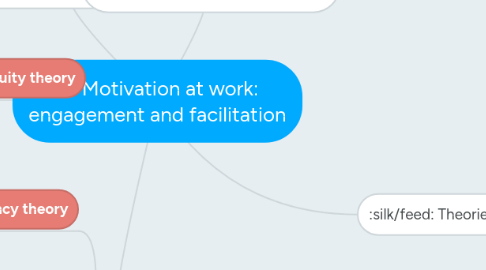Motivation at work: engagement and facilitation
by Sergio Montoya


1. Equity theory
1.1. Cognitive disordering of one’s inputs or outcomes.
1.2. Changing one’s own inputs or outputs.
1.3. Choosing a different referent.
2. Employee motivation
3. Historical perspectives of motivation
4. Process theories of motivation
4.1. Expectancy theory
4.1.1. Expectancy
4.1.2. Instrumentality
4.1.3. Valance
4.2. Goal setting theory
4.2.1. Variables such as monetary incentives
4.2.2. Setting specific high goals leads to higher performance than no goals.
4.2.3. Commitment to goal is important
4.3. Intrinsic
4.4. extrinsic
5. Theories
5.1. Hierarchy of need
5.2. Maslow’s theory,
5.2.1. ERG theory
5.2.1.1. Existence
5.2.1.2. Relatedness
5.2.1.3. Growth
5.3. McGregor (1957)
5.3.1. Theory Y
5.4. Mausner and Snyderman (1959)
5.4.1. Job enrichment theory
5.4.1.1. The opposite of job satisfaction is not dissatisfaction, rather it is no job satisfaction.
5.4.1.2. The opposite of dissatisfaction is not job satisfaction, rather it is no job dissatisfaction.
5.4.1.3. Hence job satisfaction and dissatisfaction lie on two separate continua.
